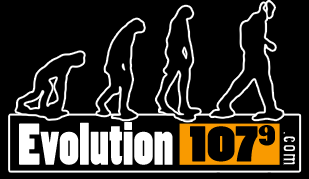(Imagem via Flickr by Raniery Melo)
Last night, something unbelievable happened here in Vancouver and around the world… If you need clarification on what I’m talking about, you probably missed the Northern Lights. And for those who missed this phenomenon, heads up, it’s happening again tonight, but sadly, it won’t be a frequent occurrence
The Northern Lights, or aurora borealis, occurs due to the interaction between solar particles and Earth’s magnetic field. When these charged particles collide with atoms and molecules in our atmosphere, the reaction releases energy in the form of light, creating the spectacular light show I was lucky enough to be able to witness.
Now you might be thinking, “Isn’t this something you can only see in the Arctic?” Well, it’s definitely a more common occurrence in Canada’s polar regions, but under specific conditions, like during a strong solar storm, the southern region of Canada can get a chance to see it. And, since the solar storm was strong, the aurora was visible not just here but in many other parts of the world too.
As a Brazilian citizen who barely knew what the Northern Lights were until I heard about the phenomenon in Canada, experiencing the light last night, I can say for sure it was one of the most magical and illuminating experiences I’ve ever had. All thanks to some friends who wouldn’t take no for an answer. Hahaha! And the funniest part was before heading to the roof of my building to look, I was imagining the sky all green, the lights moving in a big wave across the sky. When I got there, the sky was all dark and I thought: “Where’s the aurora, guys???” When I opened my phone, BOOM.
(Imagem via Flickr by Raniery Melo)
I almost couldn’t believe it: the sky was painted with vivid colors — greens, purples, and blue hues — a light show that seemed like a scene straight out of a movie.
Anyway, for those interested, my tip is to make the most of winter nights when the sky is clearer and the nights are longer. And of course, try to stay away from city lights, light pollution can obstruct your view of the auroras. I watched from the rooftop of my building but ideally, you should go somewhere with little to no light pollution.
Some several apps and websites can help you know when conditions are favorable for the aurora to appear, here are a few really useful ones:
- Aurora Forecast: This app is excellent for those in North America. It provides real-time predictions on aurora activity, plus tips on how to view them best.
- Space Weather Live: This website offers detailed information about space weather and the auroras. In addition to predictions, you can learn more about the phenomenon and better understand the conditions that favor its occurrence.
- Aurorasaurus: A collaborative project where users can report sightings of the aurora. This helps create a real-time map of auroral activity, making it a great tool for aurora hunters.
As for the best times to watch the Northern Lights, the period between 9 PM and 2 AM is generally considered ideal. This is when geomagnetic activity often reaches its peak, increasing the chances of seeing the lights. However, it’s always good to check specific forecasts for the day you plan to observe, as auroral activity varies a lot.
Seeing the Northern Lights is a memory I’ll always cherish. It made me feel an incredible connection with the world around me. If you’re also an urban adventurer or a nature lover, put this on your Bucket list.
I guarantee it will change the way you see the world. A clichê however the beauty of nature is amazing

(GIF via Explore Canada/Giphy)
So, did you see the Northern Lights last night? No? Have you ever seen them in your life?
Tell me below how your experience was. I’d love to hear about your first reaction.



